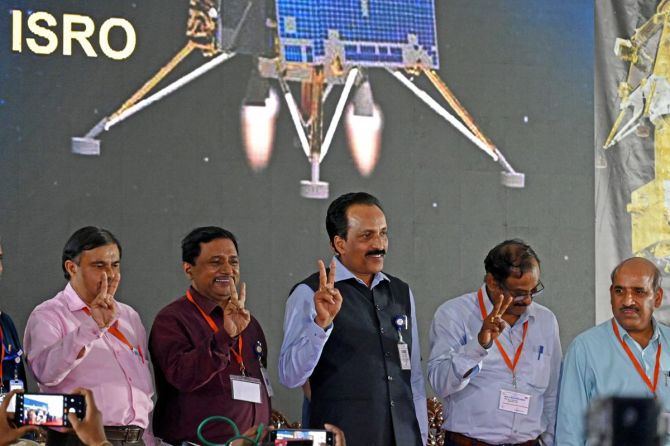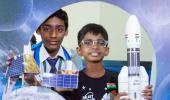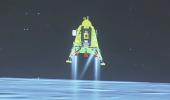While the historic success of Chandrayaan-3 is celebrated by Indians across the world, two untrumpeted engineering colleges in Kerala are basking in the glory of the key role played by some of their alumni in the crucial Moon mission.

Many of the space scientists who contributed to the successful mission had graduated from the College of Engineering, Thiruvananthapuram in Thiruvananthapuram, while Indian Space Research Organisation chief S Somanath is a product of Thangal Kunju Musaliar College of Engineering in nearby Kollam.
Extending the institution's happiness and pride over the contributions of its old students, Principal Dr Savier JS said Chandrayaan-3 was a "proud moment" for CET.
"The College of Engineering Trivandrum can be immensely proud of the role played by several of its alumni in the success of the Chandrayaan mission," he told PTI.
Hundreds of CETians work at various ISRO centres, right from engineer SC (entry) level to senior leadership positions, and contribute significantly to all major missions undertaken by ISRO, he said.
Seniormost alumni, who are currently holding important roles across several ISRO centres, are from the batch of 1986, he said.
Chandrayaan-3 mission director S Mohana Kumar, Chandrayaan-3 associate mission director G Narayanan, VSSC projects associate director Shooja A, Liquid Propulsion Systems Centre associate director Suresh MS, Human Space Flight Centre director M Mohan, avionics deputy director Athula Devi, Satish Dhawan Space Centre director A Rajarajan, all belonging to the 1986 batch of CET, have contributed to the success of the Chandrayaan mission.
Cryo Fluid and Thermal Systems Group head Harikumar, M1 C25 Stage of LVM3 vehicle engineer Tomy Joseph, MME DD Premdas M and SPRE DD Satheesh Kumar, also belonging to the 1986 batch, were a part of the Moon mission as well.
The principal said they would be handing over the reins of many upcoming prestigious missions and projects to colleagues from junior batches of CET who have also joined ISRO.
Several CETians have contributed to the growth of ISRO since its inception, including stalwarts like former ISRO chairman Dr G Madhavan Nair, Savier added.
Kollam-based TKM College of Engineering too is elated by the success of Chandrayaan-3, as present ISRO chief Somanath himself is its alumnus.
TKMCE was the first government-aided engineering college to be established in Kerala.
"Chandrayaan touched the Moon. Big salute to the ISRO team led by our esteemed alumnus Somnath sir . Jai Hind," the college management posted on Facebook soon after the mission achieved its objective of soft landing on lunar surface.
Senior Congress leader and MP Shashi Tharoor highlighted the contributions of the alumni of the state engineering colleges on social media.
"Worth applauding: @ISRO chief Dr Somanath is a product of the TKM College of Engineering, Kollam, Kerala and many of his colleagues graduated from the College of Engineering, Thiruvananthapuram," he said in a recent social media post.
At least seven more engineers from CET were involved in the #Chandrayaan 3 success, he added, and shared a photo of them.
"Indians are rightly obsessed with the IITs, but let's salute the alumni of unsung engineering colleges who serve the public sector with dedication and who are the backbone of national enterprises like @ISRO," the Thiruvananthapuram MP wrote on the social media platform 'X'.
"IITians went to Silicon Valley; CETians took us to the Moon!," Tharoor, a member of the Congress Working Committee said in the post.
In a giant leap for its space programme, India's Moon mission Chandrayaan-3 touched down on lunar surface at 6.04 pm on Wednesday, propelling the country into an exclusive club of four nations that have achieved the rare feat and making it the first country to land on the uncharted surface of the south pole of Earth's only natural satellite.
With this touchdown on the Moon scripting history after a flawless 41-day voyage and less than a week after a Russian lander headed to the lunar south pole crashed, India has become the fourth country to master the technology of soft-landing on the Moon after the US, the erstwhile Soviet Union and China.










